- Submissions

Full Text
COJ Technical & Scientific Research
Computer Design of a Variety of Color Drawings
Shlyahtenko Pavel Grigorevich*
Doctor of Technical Sciences, Russia
*Corresponding author: Shlyahtenko Pavel Grigorevich, Candidate of Physical and Mathematical Sciences, Doctor of Technical Sciences, Russia
Submission: November 10, 2018;Published: November 20, 2018

Volume1 Issue3 November 2018
Annotation
A new method and software for computer construction of a variety of color drawings according to given formulas is proposed. The results of the work can be used to automate or speed up the process of creating a geometric pattern of textiles.
keywords Automating the process of creating a color pattern; Computer programs; Textile materials
Opinion
The work [1] describes the construction of any analytically given functions Z=Z (X, Y) on the X, Y plane [1]. The program allows you to display on the screen in various colors in the computer palette any desired change ranges Zi and find the numerical values of X, Y and Z at any point of the image using a computer mouse.
Figure 1:Diffraction section for a filament with an odd number of Strands.

Figure 1 shows the cross section constructed by the program according to the formula given in [2,3] for the light intensity in the Fraunhofer diffraction pattern I (X, Y), observed for a yarn twisted from three strands.
The order of the colors (from black, violet to red) is chosen in the direction of increasing light intensity. The maximum intensity value corresponds to white light.
Figure 2:Diffraction section for the same filament, but a different color plate.
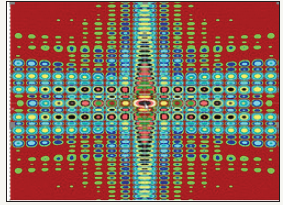
In Figure 2 shows a section constructed using the same formula, but with a different chosen order of colors.
The authors of the program thought that the computer section presented in this figure could be a prototype of a carpet, shawl or mat, and therefore, the program under discussion can be used in principle not only in scientific work, but a completely unexpected application.
For example, in computer design of drawings of various materials. Having fantasized over various formulas, they obtained sections constructed by the program using these formulas, shown in Figure 3 & 4 which quite suitable for practical use as a pattern applied to tiles, scarves or fabrics.
Figure 3:Pattern for a Scarf or Tablecloth.
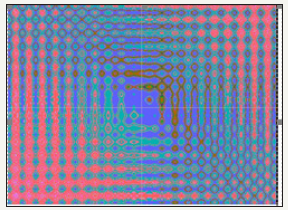
Figure 4:Pattern for Fabric.
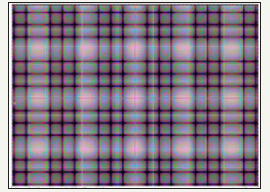
Currently, a technology has been developed for applying color on a flat surface, as well as the technology for automatically transferring a computer image of a pattern onto woven and knitted fabrics during their controlled production. This opens prospects for the creation of non-repeatable products for an individual customer.
Unfortunately, the massive use of such technologies is hampered by the artist’s low productivity. It is the unpredictable and substantial duration of this initial part of the process, depending on the state of the artist’s creative abilities at a particular moment, that is a natural brake on the way of fully automating the whole process, since the problems of automating all subsequent stages of manufacturing industrial products for a particular drawing resolved.
There is a method of computer construction of color drawings “according to fractals” [4], i.e., using special algorithms that support the principle of “small self-similarity to large” or other conceptual mathematical principles (“Mandelbrot set”, “Koch set”). In this method, the drawing serves only as a graphic illustration of a mathematical concept. In a sense, working with “fractals” in relation to the applied problem in question is similar to “finding a needle in a haystack.” As evidenced by the extremely limited set of interesting drawings that are reproduced in each subsequent edition.
In [5], the program described the construction of a variety of color drawings according to given formulas. It can be used to automate or speed up the process of creating a geometric pattern of textiles, i.e. the most important, expensive and creative part of the material creation process. This procedure has so far not been automated.
The program allows you to automate the construction according to these formulas of countless variations of sections with different numerical values of the parameters included in the formulas and the set values of the color palette. These changes can, in principle, be entered into the program automatically with the output of the corresponding sections on the display screen at a speed significantly greater than the speed of the production process.
In the memory of the developed program, which serves to demonstrate its capabilities, to date, more than 100 formulas have been laid, according to which it can build almost countless variations of color images of patterns from 16 any (not necessarily different) colors. These colors can be taken in any random sequence from the colors stored in the computer memory, or in a user-controlled mode, when one, two, three or four patterns can be immediately displayed on the display from a regular (established) or random sequence.
Similarly, choosing a picture, you can view it in any of 70 different color palettes pre-selected in the program. All these operations can be observed in the dynamics, when the drawings are non-stop replacing each other on the screen. In this case, you can choose your favorite picture, stopping it, and then observe its dynamics in different color palettes in the dynamics. The program provides virtually unlimited possibilities for interference with the parameters of the drawing (formula), its scale, color palette and color scheme, complementing and refining the elements of the drawing and paint at its own discretion. At the same time, the number of formulas entered into the program, the number of palettes and the number of colors in each palette are in principle unlimited.
Figure 5:Drawing fabric in Black and White palette.
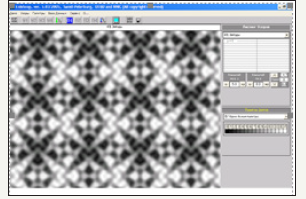
Figure 6:Color Options.

Figure 7:Color Options for various formulas.

Figure 8:Variant of Drawing in one of the color palettes.
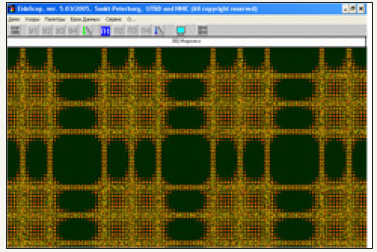
Figure 9:Possible Solutions for Other formulas.

Figure 10:Drawing for Napkins.
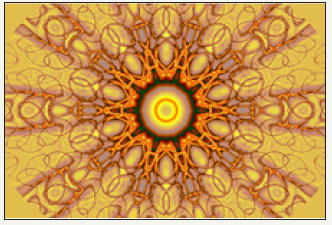
Figure 11:Carpet Pattern.
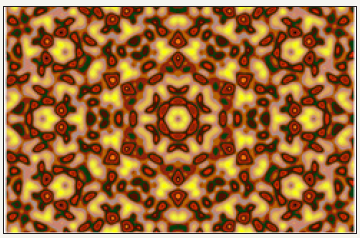
Figure 12:Other Color Solution.
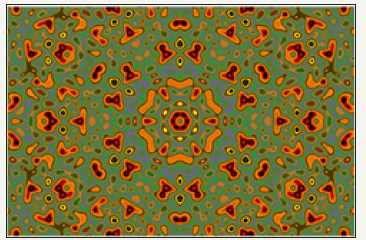
Figure 13:Figure Carper built on a different formula.

Figure 14:Carpet Patten.
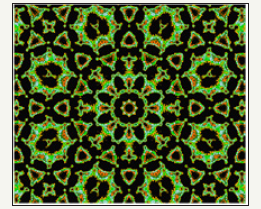
Figure 15:Carpet Patten.
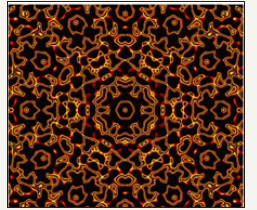
Figure 16:Embroidery Pattern.

Figure 17:Track Picture.
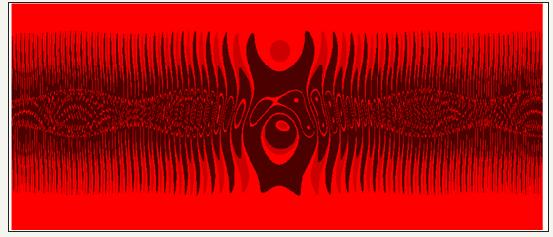
In Figure 5- 17, figures are presented, constructed by computer by the proposed method, illustrating its capabilities.
From the analysis of long-term work with the program we can draw the following conclusions:
A. Formulas have been found that suggest that computergenerated drawings based on them can be successfully used in various materials (carpet, scarves, tiles, mats, fabrics, bedding, linoleum, and oilcloth).
B. Shows the promising use of the program to build countless variations of unique color patterns suitable for use in production.
C. The program is promising when creating completely new technologies for storing and information about pictures in advertising, as it requires thousands of times less computer memory for storing and reproducing pictures.
D. The results of the work can be used to automate or speed up the process of creating a geometric pattern of textiles, that is, the most important, expensive and creative part of the technological process of creating a material.
E. The program can be used to create fundamentally new technologies for the storage, selection, production and sale of products using a unique, non-repeating pattern chosen by the customer. This opens the way for the creation of a new production technology of a material with a unique, nonrepeating pattern directly “customized”, which itself can be an accomplice in the process of creating a pattern.
The program can also be used as a textbook for students in the specialty “Computer Design”, as well as in the form of a game that develops artistic taste and mathematical abilities in children.
References
- Shlyahtenko PG (2010) Nerazrushayshie methodi opticheskogo kontrolia strukturnich parametrov voloknistich materialov. p. 258.
- Svidetelstvo RF (2000) Ob 0ficialnoi registratcii programmi dlia EVM № 200611132 Programma postroenia tcvetnich topograficheskih secheni dvumernih funktcii”/Shlyahtenko PG. VP Nefedov Zareg v Reestre programm dlia EVM 31.10.2000г.
- Shlyahtenko P (2016) Difraktionnii kontrol tekstilnich materialov. Apparatnie i dezapparatnie mettodi. Lap Lambert, Academic Publishing GmbH & Co KG, Germany, p. 239.
- Paitgen ХО, Rihter PХ (1993) Krasota fraktalov М Мir p. 176.
- (2007) Programma postroenia mnogochislennih variatcii tcvetnih risunkov po analiticheskim formulam № 2007610203/Shlyahtenko PG, VP Nefedov, Zareg v Reestre programm dlia. Opubl Proguammi dlia EVM Bul EVM 09.01.2007.
© 2018 Shlyahtenko Pavel Grigorevich. This is an open access article distributed under the terms of the Creative Commons Attribution License , which permits unrestricted use, distribution, and build upon your work non-commercially.
 a Creative Commons Attribution 4.0 International License. Based on a work at www.crimsonpublishers.com.
Best viewed in
a Creative Commons Attribution 4.0 International License. Based on a work at www.crimsonpublishers.com.
Best viewed in 







.jpg)






























 Editorial Board Registrations
Editorial Board Registrations Submit your Article
Submit your Article Refer a Friend
Refer a Friend Advertise With Us
Advertise With Us
.jpg)






.jpg)














.bmp)
.jpg)
.png)
.jpg)










.jpg)






.png)

.png)



.png)






